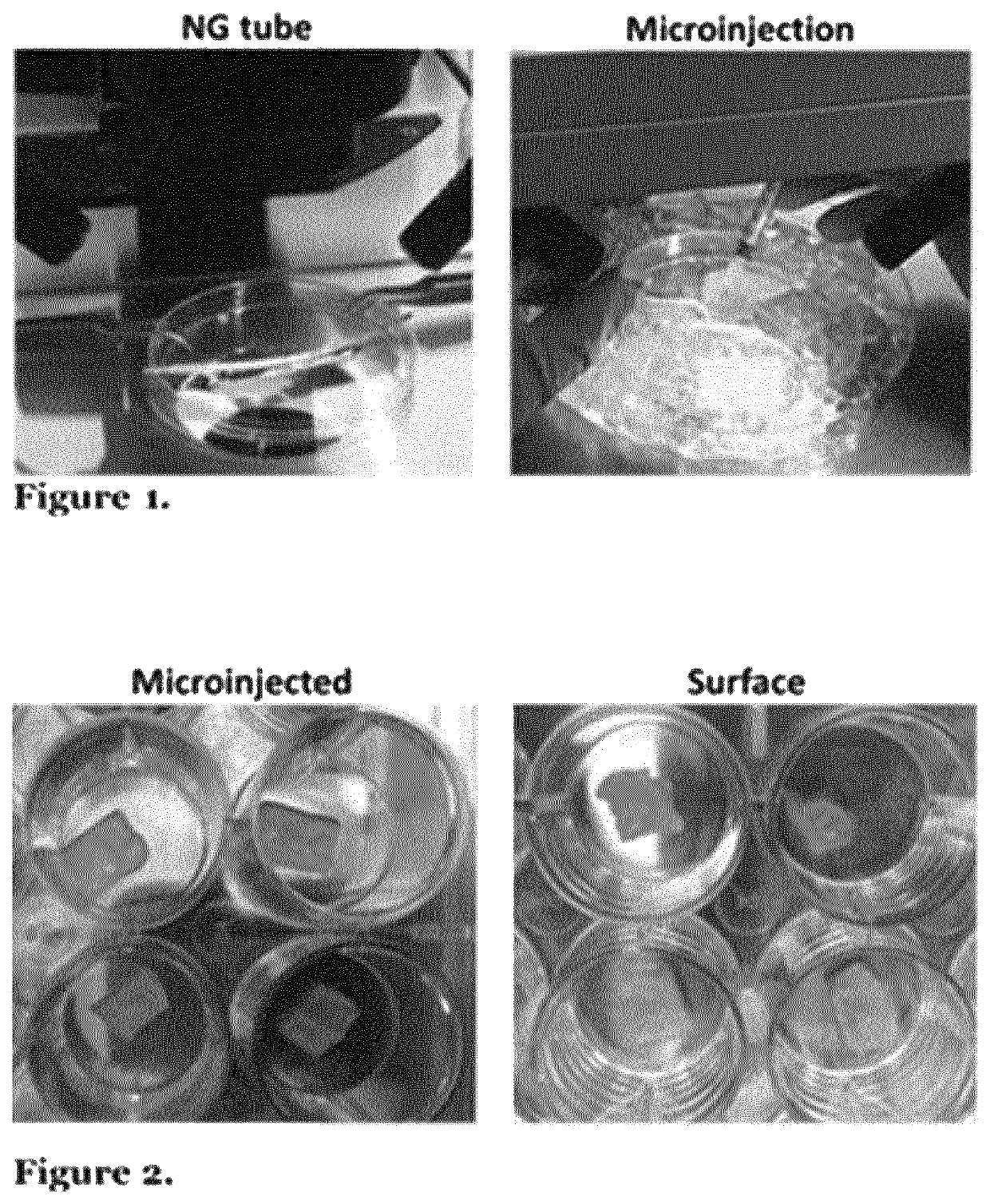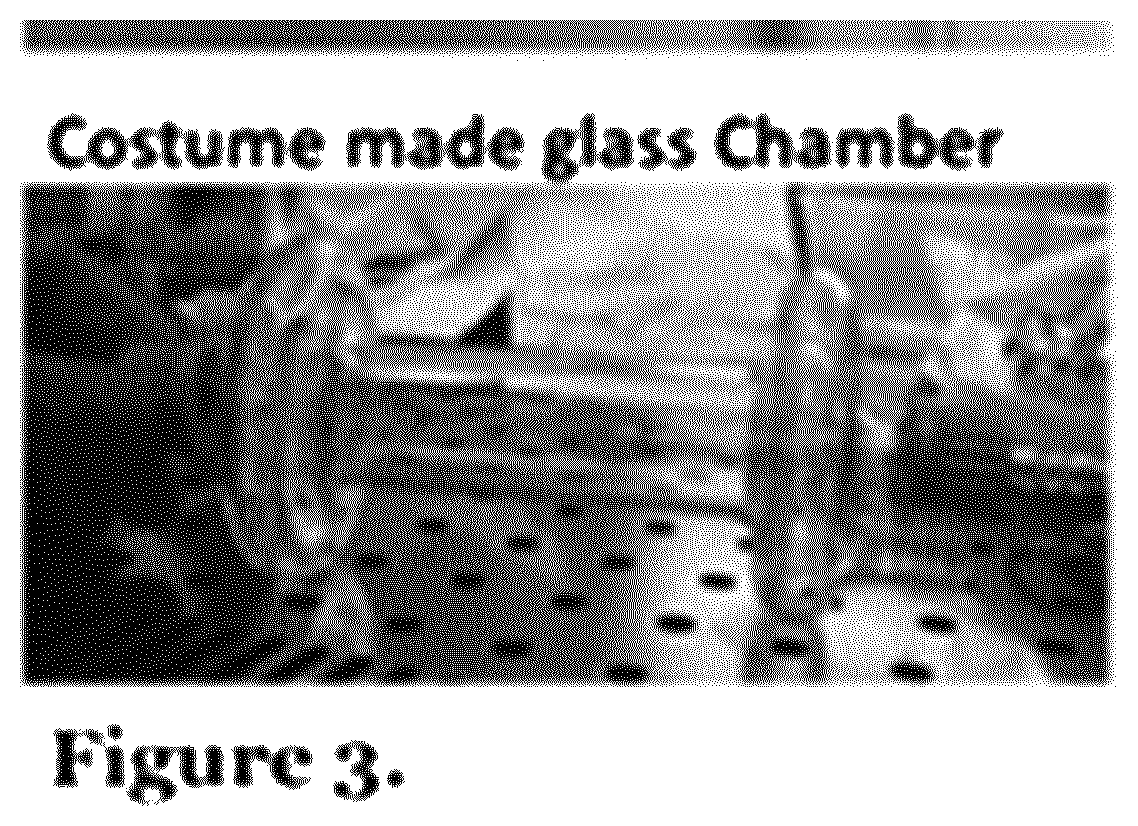Tissue engineering
a tissue engineering and implant technology, applied in the field ofluminal tissue implants, can solve the problems of complex harvesting of organs, combination of tissue engineering, low cell engraftment, lack of homogeneous cell population on the scaffold, etc., and achieve the effect of improving cell engraftment and colonizing the 3d matrix
- Summary
- Abstract
- Description
- Claims
- Application Information
AI Technical Summary
Benefits of technology
Problems solved by technology
Method used
Image
Examples
example 1
S Characterization
[0172]Fetal MABS showed comparable morphology, features and marker expression with adult MABS. FACS analyses detected low levels of CD31, CD34, CD45, CD90 (0-1%), high levels of CD44 (97-100%) and variable levels of CD56 and CD146 (0-25%). In culture with proliferating medium, fMABS were positive for AP reaction and NG2 staining, two classic markers of MABS (FIG. 6). When incubated with skeletal muscle differentiating medium, cells were able to fuse and form mature myotubes positive for MF20 and expressing the nuclear marker myogenin (MyoG). fMABS also demonstrated differentiation ability towards smooth muscle phenotype when cultured with low serum medium added enriched with TGFβ cytokine. After 6 days in smooth muscle differentiating medium cells expressed typical smooth markers such as SM22 and aSMA.
example 2
ing Optimization in the Acellular Oesophageal ECM
[0173]Oesophageal acellular matrix seeding was performed comparing cell delivery in Matrigel or medium to understand vehicle's effect on cell survival and engraftment. In addition, microinjection versus superficial seeding comparison was evaluated analysing cell adhesion and migration into the scaffold after 24 and 48 hours of static culture. Fetal MABS delivered in Matrigel either through microinjections and surface seeding in rat acellular oesophageal scaffolds showed cell adhesion and survival after 24 and 48 h. Cell adhesion on the surface of the matrix was more efficient than cell engraftment within the matrix in microinjected samples; however cell number increased with time in the case of microinjected matrices highlighting higher cell proliferation (FIG. 7). Cells seeded only with medium displayed lower engraftment and proliferation, with no substantial changes between 24 and 48 h of static culture. These data helped improve th...
example 3
g of fMABS and mFBs in the Acellular Scaffold
[0174]Co-seeding experiments were performed to establish fibroblast (FB) effect on cell survival and migration inside the matrix when seeded together with fMABS. We microinjected fMABS combined with mouse FBs in a ratio of 85:15 and 70:30 or fMABS alone as a control, for a total cell density of 1×106 / 5 mm scaffold length. Samples were then cultured in static condition for 5 days. Cryosections of seeded scaffolds stained with DAPI showed a considerable number of cells and better cell distribution in co-seeded scaffolds compared to fMABS alone seeded samples, indicating a positive effect of FBs on fMABS engraftment in the ECM (FIG. 8). Furthermore, the best ratio of fMABS and mFBs seemed to be 85:15, displaying an evident higher number of cells inside the matrix. These data will be completed with additional analyses to identify fMABS and mFBs in the seeded samples and their marker expression specification after 6 days in co-culture. In addi...
PUM
| Property | Measurement | Unit |
|---|---|---|
| volume | aaaaa | aaaaa |
| volume | aaaaa | aaaaa |
| flow rate | aaaaa | aaaaa |
Abstract
Description
Claims
Application Information
 Login to View More
Login to View More - R&D
- Intellectual Property
- Life Sciences
- Materials
- Tech Scout
- Unparalleled Data Quality
- Higher Quality Content
- 60% Fewer Hallucinations
Browse by: Latest US Patents, China's latest patents, Technical Efficacy Thesaurus, Application Domain, Technology Topic, Popular Technical Reports.
© 2025 PatSnap. All rights reserved.Legal|Privacy policy|Modern Slavery Act Transparency Statement|Sitemap|About US| Contact US: help@patsnap.com



